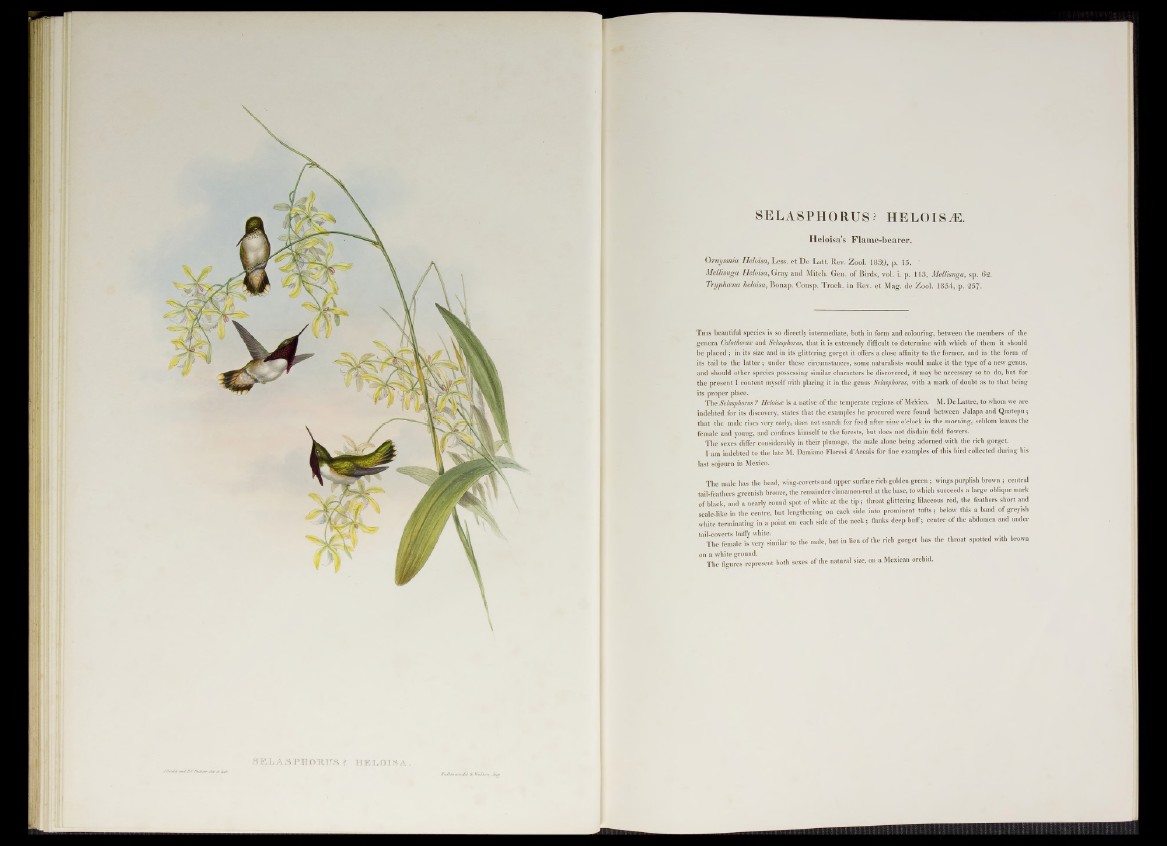
SELASPHORUS? HELOISA.
Heloisa’s Flame-bearer.
Ornysmia Heloisa, Less, et De Latt. Rev. Zool. 1839, p. 15. '
Mellisuga Heloisa, Gray and Mitch. Gen. of Birds, vol. i. p. 113, Mellisuga, sp. 6 2 .
Tryphcena heloisa, Bonap. Consp. Troch. in Rev. et Mag. de Zool. 1854, p. 257.
This beautiful species is so directly intermediate, both in form and colouring, between the members of the
genera Calothorax and Selasphorus, that it is extremely difficult to determine with which of them it should
be placed ; in its size and in its glittering gorget it offers a close affinity to the former, and in the form of
its tail to the latter; under these circumstances, some naturalists would make it the type of a new genus,
and should other species possessing similar characters be discovered, it may be necessary so to do, but for
the present I content myself with placing it in the genus Selasphorus, with a mark of doubt as to that being
its proper place.
The Selasphorus ? Heloisce is a native of the temperate regions of Mexico. M. De Lattre, to whom we are
indebted for its discovery, states that the examples he procured were found between Jalapa and Quatepu ;
that the male rises very early, does not search for food after nine o’clock in the morning, seldom leaves the
female and young, and confines himself to the forests, but does not disdain field flowers.
The sexes differ considerably in their plumage, the male alone being adorned with the rich gorget.
I am indebted to the late M. Damiano Floresi d’Areais for fine examples of this bird collected during his
last sojourn in Mexico.
The male has the head, wing-coverts and upper surface rich golden green ; wings purplish brown ; central
tail-feathers greenish bronze, the remainder cinnamon-red at the base, to which succeeds a large oblique mark
of black, and a nearly round spot of white at the tip; throat glittering lilaceous red, the feathers short and
scale-like in the centre, but lengthening on each side into prominent tufts; below this a band of greyish
white terminating in a point on each side of the neck; flanks deep buff; centre of the abdomen and under
tail-coverts buffy white.
The female is very similar to the male, but in lieu of the rich gorget has the throat spotted w.th brown
on a white ground.
The figures represent both sexes of the natural size, on a Mexican orchid.